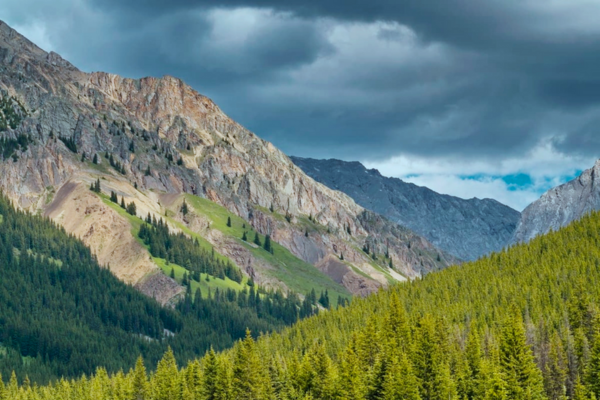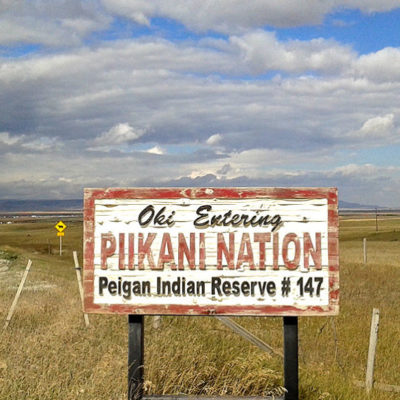Late Sunday evening Jaclyn and I were excited to be welcomed by the local schools of the Kainai (Blood) and Piikani (Peigan) nations of the Blackfoot Confederacy. We were thrilled that FortisAlberta funded CPAWS’ programs to visit the Saiypoyi, Napi, and Aashopi Elementary schools, within the Blood and Peigan Reserve, starting the following morning.
You are not alone, if you do not know where these reserves are. Both are located in the grasslands of Southwestern Alberta, along Highway 2 and the Belly River. At 1,413.87 km², the Kainai First Nation is the largest and the second most populated reserve in Canada. Created upon the signing of Treaty 7, they only represent a portion of the land these people once roamed—even as large as these reserves are.
Jaclyn and I delivered two of CPAWS’s award-winning elementary programs, Species at Risk and Water Rangers, to 24 classrooms during our week-long visit. Both of these programs tie into the grades’ curriculum by teaching the importance of conservation and stewardship of our local environment.
Throughout our visit we were able to not only teach but learn. One grade 5 teacher told me that the Whooping Crane (a species at risk) was the Medicine Crane to the Blackfoot, and her name sake. During a visit with a grade 1 class, I learned the word Inna’kootsiisin means respect in Blackfoot and is one of the Tipi Values. As well, we experienced the hospitality of the teachers and staff, always stopping to talk, or offering us coffee and food!
It is important for reciprocity and reconciliation to understand the living standards of First Nation people in Canada. 12% of First Nation communities have to boil their drinking water, impacting about 75,000 citizens. Approximately 25% of on-reserve water treatment systems pose a high health risk. During our Water Ranger presentations these issues came up. Water is an important resource; CPAWS aims to conserve it through reducing water use and water pollution.
Fortunately, Kainai Environmental Protection Agency is working to protect the quality of water on Kainai land. Farm run-off and illegal dumping are problems polluting their local rivers and coulees. Now, motion censored cameras are installed and environmental education is provided to help curb the issues. One grade 3 teacher expressed interest in increasing wetland and water protection because of the increased amount of wildlife the reserve is seeing. Pelican, elk, great blue heron, black bear, and even rattlesnake are starting to migrate into the reserve as a result of the Kenow Fire in Waterton and urban expansion in Lethbridge.
Thank you again to our funder FortisAlberta for creating this opportunity to connect with, teach, and learn from the Kainai and Piikani nations of the Blackfoot Confederacy.
Vanessa Bilan0
Environmental Educator
CPAWS Southern Alberta
Jaclyn Angotti
Education Director
CPAWS Southern Alberta
The following is a fun conversation Jaclyn had with students after students took the Water Rangers pledge.
Student A: How many Water Rangers have you initiated?
Jaclyn: Over 2,000! (exclamations of awe from the class). I can do a little bit to help water. You can do a little bit to help water. Imagine 2,000 people working together to protect water!
Student B: Are we Water Rangers?
Jaclyn: YES! Today you have become a Water Ranger.
Student C: Are YOU a Water Ranger?
Jaclyn: YES! We are ALL Water Rangers together.
More News

All-Seasons Resort Policy Released

Critical Habitat and Industry Lobbying Part 4: How DFO Allows Critical Habitat Destruction




